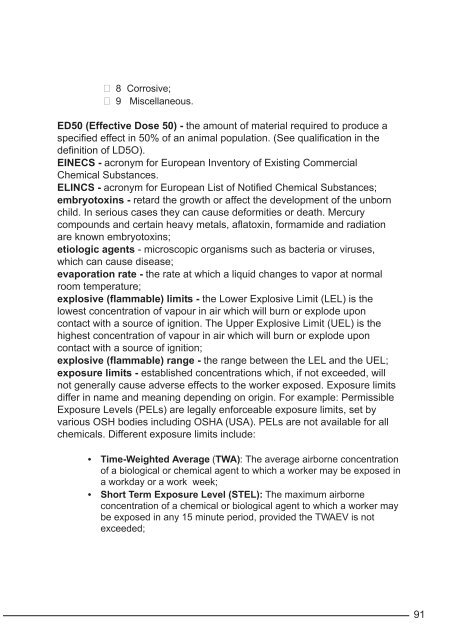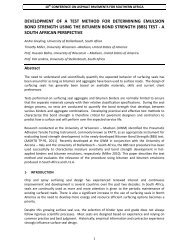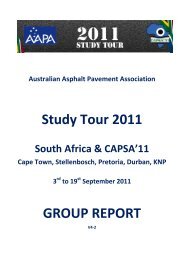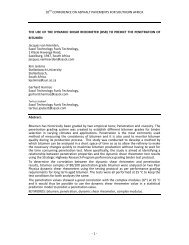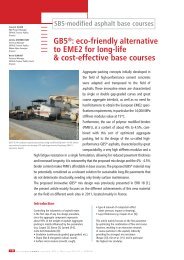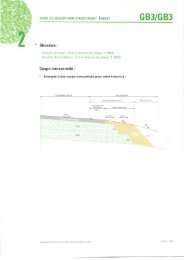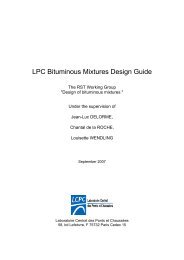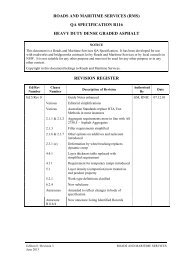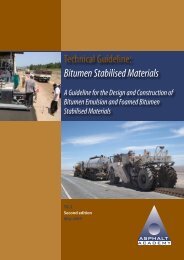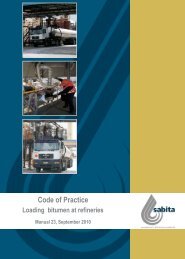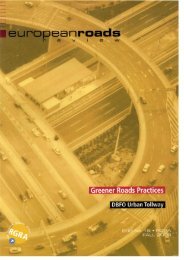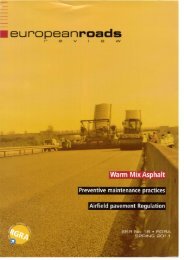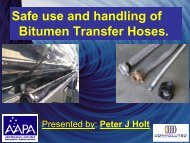Guide to the safe handling of solvents in a bituminous ... - Aapaq.org
Guide to the safe handling of solvents in a bituminous ... - Aapaq.org
Guide to the safe handling of solvents in a bituminous ... - Aapaq.org
- No tags were found...
Create successful ePaper yourself
Turn your PDF publications into a flip-book with our unique Google optimized e-Paper software.
8 Corrosive; 9 Miscellaneous.ED50 (Effective Dose 50) - <strong>the</strong> amount <strong>of</strong> material required <strong>to</strong> produce aspecified effect <strong>in</strong> 50% <strong>of</strong> an animal population. (See qualification <strong>in</strong> <strong>the</strong>def<strong>in</strong>ition <strong>of</strong> LD5O).EINECS - acronym for European Inven<strong>to</strong>ry <strong>of</strong> Exist<strong>in</strong>g CommercialChemical Substances.ELINCS - acronym for European List <strong>of</strong> Notified Chemical Substances;embryo<strong>to</strong>x<strong>in</strong>s - retard <strong>the</strong> growth or affect <strong>the</strong> development <strong>of</strong> <strong>the</strong> unbornchild. In serious cases <strong>the</strong>y can cause deformities or death. Mercurycompounds and certa<strong>in</strong> heavy metals, afla<strong>to</strong>x<strong>in</strong>, formamide and radiationare known embryo<strong>to</strong>x<strong>in</strong>s;etiologic agents - microscopic <strong>org</strong>anisms such as bacteria or viruses,which can cause disease;evaporation rate - <strong>the</strong> rate at which a liquid changes <strong>to</strong> vapor at normalroom temperature;explosive (flammable) limits - <strong>the</strong> Lower Explosive Limit (LEL) is <strong>the</strong>lowest concentration <strong>of</strong> vapour <strong>in</strong> air which will burn or explode uponcontact with a source <strong>of</strong> ignition. The Upper Explosive Limit (UEL) is <strong>the</strong>highest concentration <strong>of</strong> vapour <strong>in</strong> air which will burn or explode uponcontact with a source <strong>of</strong> ignition;explosive (flammable) range - <strong>the</strong> range between <strong>the</strong> LEL and <strong>the</strong> UEL;exposure limits - established concentrations which, if not exceeded, willnot generally cause adverse effects <strong>to</strong> <strong>the</strong> worker exposed. Exposure limitsdiffer <strong>in</strong> name and mean<strong>in</strong>g depend<strong>in</strong>g on orig<strong>in</strong>. For example: PermissibleExposure Levels (PELs) are legally enforceable exposure limits, set byvarious OSH bodies <strong>in</strong>clud<strong>in</strong>g OSHA (USA). PELs are not available for allchemicals. Different exposure limits <strong>in</strong>clude:• Time-Weighted Average (TWA): The average airborne concentration<strong>of</strong> a biological or chemical agent <strong>to</strong> which a worker may be exposed <strong>in</strong>a workday or a work week;• Short Term Exposure Level (STEL): The maximum airborneconcentration <strong>of</strong> a chemical or biological agent <strong>to</strong> which a worker maybe exposed <strong>in</strong> any 15 m<strong>in</strong>ute period, provided <strong>the</strong> TWAEV is notexceeded;91


